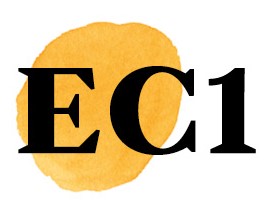A new exhibition for all ages is the first to celebrate the animals that found their way into the books and homes of Charles Dickens.

Throwing the spotlight on to the dogs, ravens, goldfinches and cats who shared houseroom with the Dickens family, as well as Dickens’s horses and the animals who became characters in stories such as Oliver Twist, Bleak House and Barnaby Rudge, Faithful Companions: Charles Dickens & his Pets runs from 15 May 2024 until 12 January 2025. The exhibition takes place at the Charles Dickens Museum at 48 Doughty Street, Holborn, the only house in which Dickens lived in London that survives.
Featuring Dickens family picture albums, photographs and beautiful illustrations, the exhibition is full of tales of Dickens’s pets, many of which are told by Charles Dickens himself, in a series of rarely-seen, handwritten letters. Visitors will learn about the household havoc caused by a succession of beloved ravens, each called Grip, who inspired a character in Barnaby Rudge and were likely the inspiration for Edgar Allen Poe’s The Raven (keep your eye on Grip III, who loved an inappropriate peck); the horse which tore Dickens’s clothes and chewed his arm; Dickens training and shaving his shaggy dog Timber, a longstanding companion; and Bob the cat, who put out Dickens’s reading light in a persistent bid for attention.

Victorian photographs of cats and dogs, including some of the family’s own pets, can be found within a photo album (pictured above), put together in the 1860s by Dickens’s daughter, Katey. Featuring unpublished images (and including pictures of humans too), the leather-bound album is a fond reflection of the family’s affection for their pets. Elsewhere in the exhibition, pets make it on to the pages of a rare and never-previously-displayed edition of the Gad’s Hill Gazette, the family newspaper created by Dickens’s children.
The exhibition is also packed with original illustrations created for Dickens’s books by his favourite artists, including ‘Phiz’, John Leech and Sir Edwin Landseer.
Younger visitors can head for the exhibition’s story space, to don costumes, dive into books and games and create animal stories on the top floor of the home in which Dickens wrote many of his own.

In the first half of the 19th century, when the Dickens family lived at Doughty Street, London had become a city full of animals, with cattle heading to Smithfield Market, dogs performing in the streets and horses pulling carts and omnibuses. A great chronicler of society, Dickens captured this Victorian profusion of animals in his stories and his journals.
Some of the most vividly told stories of Dickens’s animals come from his eldest daughter, Mamie. In her memoir, ‘My Father as I recall him,’ Mamie remembers Linda the St Bernard, Williamina the white kitten who lived, with her many kittens, at Gad’s Hill and the Pomeranian Mrs Bouncer, who would come to Dickens when he called her: ‘My father … had a peculiar voice for her—as he had for us, when we were children—to which she would respond at once by running to him from any part of the house when she heard his call. He delighted to see her with the large dogs, with whom she gave herself great airs, “because,” as he said, “she looks so preposterously small.”’
Many of the animals in Dickens’s life existed only in his novels; among the animals which are characters in their own right are Bull’s-eye, Bill Sikes’s badly-treated dog in Oliver Twist, who plays a crucial role in his callous owner’s demise; Boxer the dog from The Cricket on the Hearth; Lady Jane the ferocious cat from Bleak House (‘The cat leaped down, and ripped at a bundle of rags with her tigerish claws, with a sound that it set my teeth on edge to hear’), a book which contains thirty references to cats, the most of any of Dickens’s books.

Frankie Kubicki, Deputy Director: Programmes & Collections, at the Charles Dickens Museum, said, “Once you start looking for the animals in Charles Dickens’s life you soon realise that they are everywhere! They are heroes, villains and comic characters in his books, are mentioned fondly in his letters and share houses with him for most of his life. He was amused by them, clearly loved them – despite the odd altercation – and recognised their place in the fabric of Victorian life. We are very pleased to be giving the limelight to the likes of Grip, Bull’s-eye, Duke, Sultan, Timber and Mrs Bouncer.”

The Echo was treated to a preview of the exhibition where we met Beryl Gray, author of The Dog in the Dickensian Imagination. Her book was said to be a huge inspiration for this exhibition.
Faithful Companions: Charles Dickens & his Pets
The Charles Dickens Museum, 48-49 Doughty Street, London WC1N 2LX
Dates: 15 May 2024 – 12 January 2025.
To book tickets please visit www.dickensmuseum.com
Opening hours: 10am to 5pm, Wednesday – Sunday (closed Mondays and Tuesdays)
More information: www.dickensmuseum.com 020 7405 2127 [email protected]









